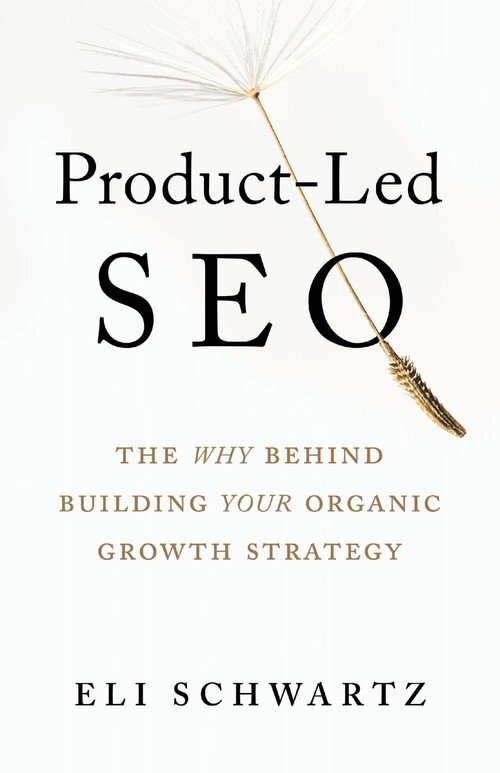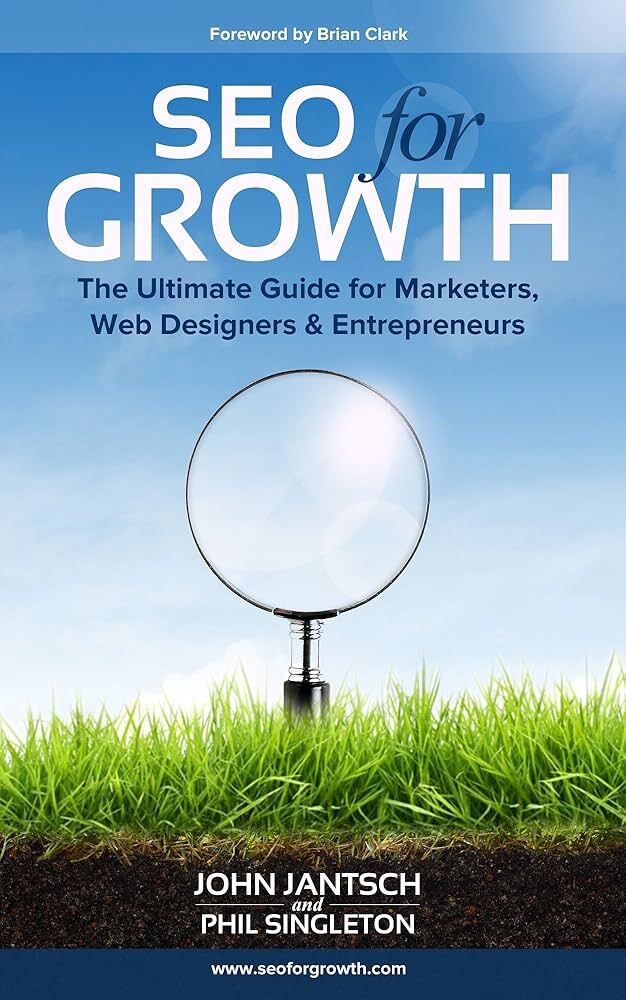193
•
10-minute read

Search is changing fast—but fundamentals still matter. In 2025, algorithms are smarter, AI Overviews are everywhere, and large-language-model summaries increasingly shape what users see. Yet behind every high-performing SEO program you’ll still find the same three pillars: a solid technical foundation, content built around user intent, and a clear measurement framework.
That’s why good SEO books remain surprisingly relevant. The best ones teach systems that outlive any single update—how to think, test, and measure like an optimizer. This guide brings together the most useful titles for professionals who already know the basics and want to go deeper: SEOs leading teams, PPC specialists broadening into organic, and marketing managers translating strategy into measurable growth.
We’ll start with how to choose the right SEO book for your goals, then cover proven titles across seven categories—from technical SEO and content strategy to leadership in the AI era.
Before buying every “must-read” list you see on social media, pause for a quick alignment check.
Define your role. Technical SEOs need different material from strategists or CMOs.
Check publication date and context. A book written before Core Web Vitals or Helpful Content updates may still be great—but read it for principles, not tactics.
Look for frameworks, not hacks. Books that teach decision-making processes age far better than those listing 100 quick tips.
Confirm AI relevance. In 2025, a good SEO text should at least acknowledge entity-based search, structured data, and how LLMs interpret web content.
A simple test: open the table of contents. If the chapters focus on “building authority,” “understanding searcher intent,” or “creating scalable systems,” it’s likely still valuable. If it talks only about “keyword density,” you can safely leave it behind.

Fifteen years after its first release, The Art of SEO remains the industry’s most comprehensive textbook. It covers everything from crawling and indexing to analytics and conversion. More importantly, it teaches you how search engines think.
Even in the age of AI, those fundamentals haven’t changed. If your site structure confuses Googlebot, no amount of “prompt-engineered content” will fix it. Use this book as a reference when planning site migrations or auditing technical debt.
Best for: SEOs who want a solid conceptual base and a single desk reference they can return to for years.

This book reframes SEO as a product discipline rather than a traffic channel. Instead of chasing rankings, Schwartz argues you should design the product experience so that search growth happens naturally—through usefulness, UX, and retention.
For leaders managing cross-functional teams, this mindset is essential. In 2025, when AI-driven SERPs often compress organic real estate, product-led thinking ensures SEO stays tied to revenue and user satisfaction rather than vanity metrics.
Best for: marketing leads and founders aligning SEO with business goals.
If Product-Led SEO tells you what to think, SEO Blueprint tells you what to do. Stewart documents the systems his agency uses to deliver repeatable results: SOPs for audits, content briefs, link outreach, and reporting.
The strength of this book lies in its operational clarity. Agencies and in-house teams can adopt its frameworks to scale SEO efficiently without reinventing the wheel each project.
Best for: senior specialists building or optimizing SEO processes.
The latest edition remains one of the most practical ways to learn or teach technical SEO. Each chapter ends with worksheets that guide you through crawl analysis, page-speed checks, and schema validation.
For managers onboarding new analysts, the workbook doubles as a curriculum. For veterans, it’s a reminder of what a clean technical setup should look like.
Try this: Run McDonald’s “SEO Health Check” quarterly. Compare your crawl logs, Core Web Vitals, and indexing coverage year-over-year—it’s the easiest way to spot silent regressions.
Entity-based optimization is at the heart of modern search. Books focused on schema markup and knowledge-graph architecture explain how Google connects your brand, products, and authors to real-world concepts.
Treat this discipline like internal linking for meaning: every page, profile, and press mention should reinforce the same entities. The payoff is stronger Brand SERPs and better visibility in AI Overviews.
Best for: SEOs interested in semantic SEO, LLM optimization, and structured data strategy.

Part marketing theory, part content-planning guide, this book helps bridge the gap between brand storytelling and search data. It’s particularly relevant in the “helpful content” era, where authority and originality matter as much as optimization.
Jantsch and Singleton focus on building ecosystems—blogs, landing pages, newsletters, and social—that reinforce each other. The framework encourages you to track conversions and leads instead of raw traffic.
Practical takeaway: Audit your content using their “5 C’s” model—Clarity, Credibility, Consistency, Connection, Conversion—and remove pages that fail at three or more.
While not a pure SEO manual, Crestodina’s classic explains how to turn content into measurable results. It’s rich with data on headlines, CTAs, and user psychology, making it perfect for content leads looking to optimise beyond keywords.
In 2025, pairing Content Chemistry with real-time tools like Rank Tracker or WebSite Auditor helps teams balance creativity with structure.
Link acquisition has evolved, but the principles here remain solid: create something worth referencing, and get it in front of people who care. Ward and French provide methodologies for research, prospecting, and outreach that still outperform scatter-shot email blasts.
Modern twist: track mention velocity as well as link count. Brand references—even without hyperlinks—can improve trust signals used by AI summaries. Tools like Awario or Mention can help measure that visibility.
A concise, example-driven guide to building linkable assets. Moogan breaks down campaign ideation, promotion, and measurement using real case studies.
Combine his advice with entity tracking and digital PR workflows, and you have a sustainable link-earning engine that feeds both traditional and generative search visibility.
Azarenko translates broad SEO principles into the constraints of ecommerce platforms like Shopify and WooCommerce. The book covers product taxonomy, faceted navigation, and data-feed hygiene—issues that plague most online stores.
In 2025, with Google Merchant Center tightly integrated into organic results, understanding these mechanics is non-negotiable.
Key insight: treat your product feed as a living knowledge graph. Complete attributes and user reviews don’t just affect ads—they improve organic trust and click-through rates.
While there’s no single definitive textbook, several short guides—such as Local SEO Secrets by Roger Bryan—offer practical frameworks for multi-location brands. The focus is on consistent NAP data, review acquisition, and location-page uniqueness.
For agencies managing franchises, build internal playbooks inspired by these texts: one template for local content, one for citation management, and one for reputation response. Consistency beats creativity here.
Barnard’s work has become a cornerstone of the entity-SEO movement. It explains how Google constructs a brand’s knowledge panel and how to influence that view through structured data and consistent external profiles.
As AI Overviews pull directly from knowledge-graph entities, this material is now mission-critical. Implementing Barnard’s checklists—Organization markup, author schema, corroborated social links—helps LLMs describe your brand accurately.
Best for: marketers responsible for brand reputation, entity integrity, and executive visibility.
SEO management today is as much about operations as about optimization. Books like The E-Myth Revisited (Michael Gerber) and Atomic Habits (James Clear) may not mention meta tags, but their lessons on process design and incremental improvement apply directly.
Combine those insights with SEO Blueprint’s tactical frameworks to build an organisation where SEO improvements are continuous rather than project-based.
Practical application: set up quarterly “SEO Ops” reviews. Evaluate backlog health, experiment velocity, and implementation lag—the hidden killers of organic growth.
Reading without execution changes nothing. Here’s a simple plan to turn insights into impact:
Week 1 – Choose and skim. Select one book aligned with your role. Summarise its three most actionable ideas.
Week 2 – Apply. Implement a small but measurable change (for example, add structured data to a key page or redesign your internal linking hub).
Week 3 – Promote. Publish or pitch one asset following the book’s advice.
Week 4 – Measure. Track impressions, clicks, conversions, and mentions. Document what worked and what didn’t.
At month’s end, you’ll have a mini-case study you can replicate across the site—proof that theory became practice.
The fundamentals—crawlability, content quality, and clear measurement—still decide long-term success.
Framework-driven books like The Art of SEO and Product-Led SEO teach thinking that survives algorithm shifts.
Entity awareness and structured data are the bridge between traditional SEO and AI search.
Mentions now matter almost as much as links; measure both.
Reading is only valuable when paired with experimentation.
What are the best technical SEO books right now?
SEO Workbook (2025 Edition) for practical exercises, plus Entity SEO for semantic optimization.
Which title helps align SEO with business goals?
Product-Led SEO—it connects organic strategy directly to growth metrics.
Any strong link-building guides left?
Ultimate Guide to Link Building and Content That Earns Links remain timeless if you apply their outreach frameworks.
Are online resources enough?
Blog posts show trends; books provide structure. Use both.
How often should I revisit these materials?
Annually. SEO evolves fast, but revisiting fundamentals keeps your decision-making sharp.
The search landscape of 2025 is unpredictable, but the principles behind it aren’t. Every new algorithm or AI summary still rewards the same behaviours: fast, accessible pages; authoritative, useful content; and clear, consistent entities.
Good SEO books help you internalise those behaviours. They give you frameworks you can apply across tools, campaigns, and technologies. Pick one from this list, set a 30-day goal, and put the theory to work.
If you’ve discovered a recent title that belongs here—or tested one of these frameworks in your own workflow—share your results in the comments. Your insights help the entire community keep evolving just as fast as search itself.
Ready to level up your SEO practice? Use the free version of Rank Tracker or WebSite Auditor from SEO PowerSuite to implement and measure what you learn from these books. Each title teaches the “why”—our tools make the “how” faster.

